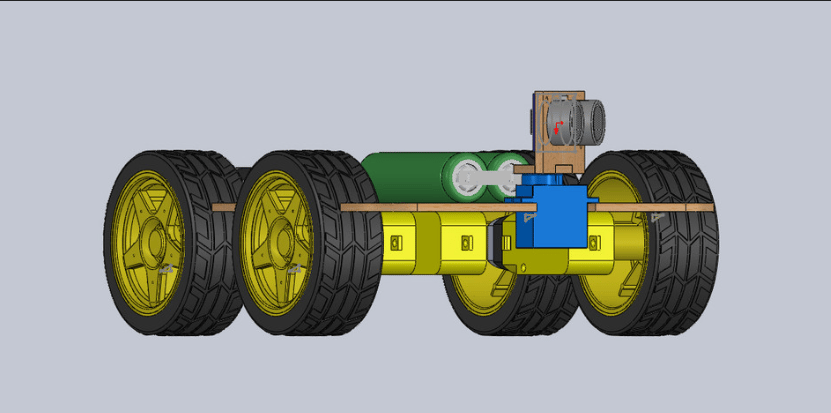- Pragmatic Parenting
- Posts
- How Robotics Teaches Kids Patience and Problem-Solving—One Glitch at a Time
How Robotics Teaches Kids Patience and Problem-Solving—One Glitch at a Time
Brains, Bots, and Breakdowns
When Things Don’t Work the First Time
If your child has ever tried to build a robot—whether it's a Lego Mindstorms kit or a simple line-following bot—you’ve probably witnessed the moment when it doesn't work. The gears don't align. The code errors out. The sensors misread.
And yet… they try again.
Robotics, often seen as a fun, high-tech hobby, is quietly one of the best teachers of patience and problem-solving for children. It goes beyond STEM skills—it builds resilience, critical thinking, and the ability to troubleshoot with purpose, not panic.
In this edition of Pragmatic Parenting, we explore why introducing robotics—even in its simplest forms—can be one of the best gifts you give your child.
Why Robotics is More Than Just Cool Gadgets
At first glance, robotics is all flashing lights, tiny motors, and whirring sounds. But underneath the surface, it offers something deeper:
Delayed Gratification: Robots rarely work perfectly the first time. Success takes time.
Cause and Effect Thinking: Kids see how one change in code or hardware changes the outcome.
Iterative Learning: Trial and error isn't failure—it's the core of the process.
Tactile Patience: Waiting for sensors to respond, motors to calibrate, and code to upload forces a slower, more methodical pace.
These are not just engineering lessons. They're life skills.
Robotics Builds Problem-Solving Muscles
When something goes wrong in a robot (and it will), kids have to diagnose:
Is the wire connected properly?
Is the code logic flawed?
Are the batteries low?
Is the sensor placed too high?
That process of isolation, testing, and reasoning mirrors the scientific method, and it builds a mindset of:
Observation
Iteration
Solution
Even better, robotics doesn’t usually provide instant answers. Kids learn to tinker, test, and rethink their approach. This nurtures independent thinking and emotional regulation—a powerful combination in both academic and real-world settings.
The Patience Factor: When Screens Don’t Reward Instantly
In an age of swipe-to-refresh entertainment, robotics offers a counterbalance.
There are no instant likes. No autoplay next levels. Just the slow, steady progress of making something physical work as intended.
That sense of earned accomplishment builds intrinsic motivation. Kids learn that frustration is not a dead-end—it’s a checkpoint. They learn how to:
Pause
Reset
Try again
The payoff? A deeper form of confidence that sticks.
Real-World Benefits
Studies and anecdotal reports from schools and robotics clubs show consistent benefits:
Improved attention span
Better collaboration in teams
Higher persistence in problem-solving tasks
More resilience when facing academic setbacks
Even more interesting: kids who engage in robotics tend to do better not just in STEM, but in writing and communication—because they learn how to document their process and explain their reasoning.
How You Can Start at Home
You don’t need expensive kits or formal programs. Robotics can start small.
Try This: Build a Simple Obstacle-Avoiding Robot
Buy a beginner robot kit online (like Makeblock, ELEGOO, or LEGO Spike) that includes basic sensors and wheels. Help your child program it to avoid walls using proximity sensors.
Let them:
Assemble the parts (mechanical patience)
Connect the sensors (attention to detail)
Write a few lines of code (logical thinking)
Test and tweak (resilience in action)
Resist the urge to fix it for them. Instead, ask questions like:
“What do you think is causing that?”
“What have you tried already?”
“What could you try next?”
Home Robotics Activity: Obstacle-Avoiding Robot Challenge
Looking for a fun and educational project to do with your child? Try building an obstacle-avoiding robot using a beginner-friendly robotics kit like ELEGOO UNO, Makeblock mBot, or LEGO Spike. Designed for kids aged 8 and up, this activity teaches problem-solving, logic, and patience—all while having fun.
Start by assembling the robot together, then attach a simple ultrasonic sensor that detects nearby objects. Using block-based or beginner coding software, help your child program basic commands like: “If object is too close, turn—otherwise, move forward.” Test it in an open area and encourage your child to adjust the code when things don’t go as planned.
Next, turn your living room into a robot test zone using books, cushions, or boxes as obstacles. Set simple challenges like “avoid five obstacles in under two minutes” or “complete the maze without touching anything.”
Throughout the activity, ask reflective questions like “What went wrong?” or “How could we fix that?” to build resilience and reasoning skills.
This hands-on experience shows kids that mistakes are just part of the process—and that with a little patience and creativity, they can solve almost anything.
It's Not About the Robot
In the end, the goal of teaching kids robotics isn’t to turn them into engineers. It’s to help them think like builders, persist like problem-solvers, and stay calm when things break.
Because in life—as in robotics—things will go wrong.
The gift of patience and the confidence to figure it out?
That’s the real win.
Don’t let a surprise vet bill torpedo your budget
Routine vet checkups are rising, and some surgeries can cost as much as a holiday in Europe. Fortunately, pet insurance can help offset these unexpected costs. With some policies starting at $10 and reimbursing up to 90%, you can keep your pet healthy without sacrificing your savings.
Until next time,
Team Pragmatic Parenting

